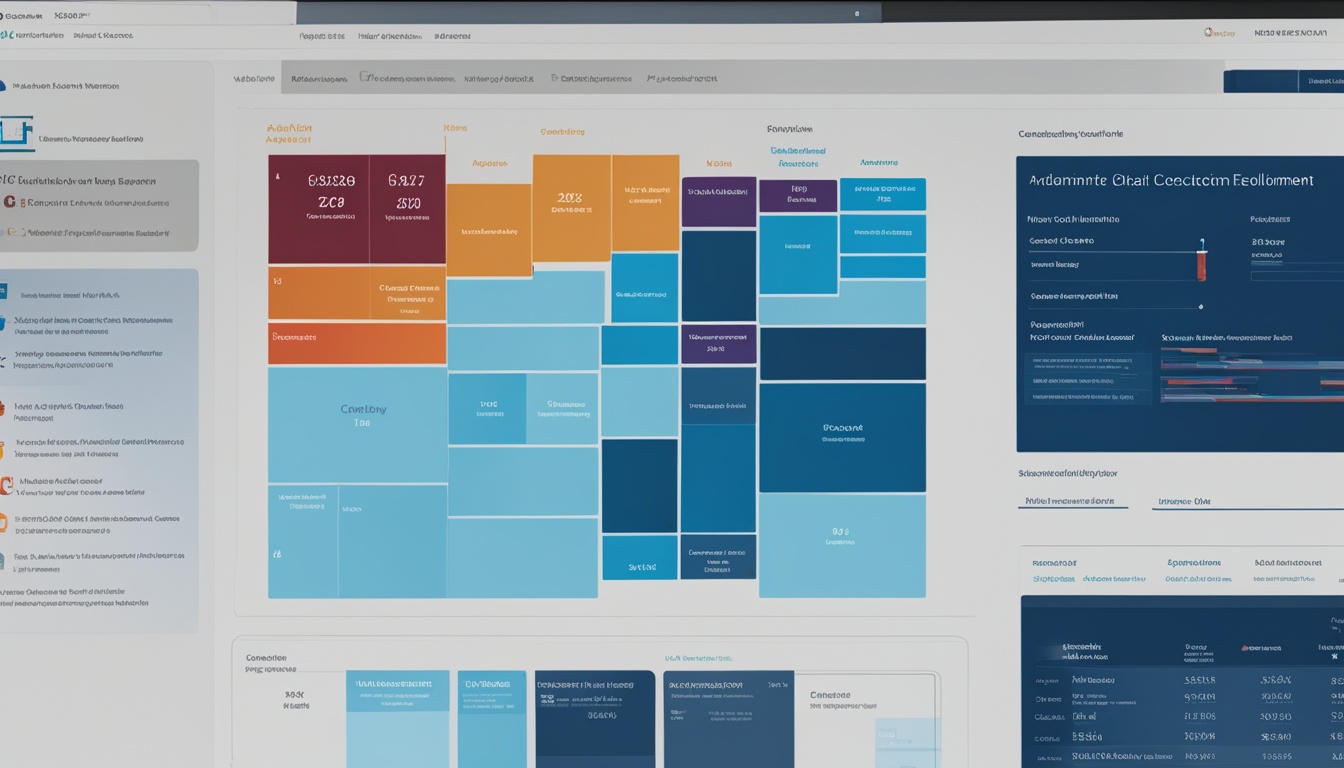How to Navigate the US Department of Education Resources
The U.S. Department of Education (ED) was created in 19801. It aims to help students do well and get ready for the world. This agency is key in making education policies and programs in the U.S. It has lots of resources for students, families, teachers, and everyone interested in education. This guide will show you how to find the ED’s resources on education policies, student aid, and funding for schools.
Key Takeaways
- The U.S. Department of Education is a cabinet-level federal agency established in 19801
- The Department of Education offers a wide range of resources and information for students, families, educators, and the public
- Resources cover topics such as education policies, student aid, and academic funding
- Navigating the ED’s website and resources can help you access valuable information and support
- Understanding the Department’s structure and divisions can aid in finding the right resources
Understanding the US Department of Education
The U.S. Department of Education (ED) is in charge of making and enforcing education policies2. It started in May 1980, after a law was passed in October 19792. The goal is to help students do well and get ready for the world by making education better and fair for everyone.
The ED looks after many programs and initiatives2. In 2007-08, it helped about 55 million students in over 100,000 public and 34,000 private schools2. It also gave aid to around 10 million college students2.
The ED gives out financial aid, makes sure of civil rights, does research, and shares info with educators and policymakers3. It’s key in making education fair, innovative, and helping the country move forward2. By mid-2010, it had almost 4,300 workers and a budget of about $60 billion2.
| Year | Employees | Budget |
|---|---|---|
| 1860s | 4 | $15,000 |
| 1965 | Over 2,100 | $1.5 billion |
| Mid-2010 | Nearly 4,300 | Approximately $60 billion |
The role of the U.S. Department of Education has changed over time2. It started in the 1860s with just $15,000 and four people2. Now, it’s a key agency that drives education forward and fights for fairness2.
“The Department was created in May 1980 after Congress passed the Department of Education Organization Act in October 1979.”
Exploring Key Divisions and Programs
The U.S. Department of Education has many important divisions and programs. One key division is the Office of Special Education and Rehabilitative Services (OSERS). It handles the Individuals with Disabilities Education Act (IDEA) and the Rehabilitation Act of 1973, updated by the Workforce Innovation and Opportunity Act (WIOA)4. OSERS offers help and resources for special education, early intervention, and job training for people with disabilities.
Office of Special Education and Rehabilitative Services (OSERS)
OSERS is key in making sure students with special needs get equal chances in school. It makes sure students with disabilities have their rights and gets them the help they need to do well in school and life4. This includes funding for special education, promoting being included in school, and working with local schools to make good policies.
OSERS also looks after the Rehabilitation Services Administration (RSA). The RSA helps people with disabilities find jobs and live independently5. Programs like job training and living on their own help people with disabilities get into the workforce and be part of their communities.
With IDEA, the Rehabilitation Act, and WIOA, OSERS shows the U.S. Department of Education’s dedication to helping all students, including those with disabilities4. This broad approach makes sure people with special needs have what they need to achieve their goals.
“The mission of OSERS is to improve early childhood, educational, and employment outcomes and raise expectations for all individuals with disabilities, their families, their communities, and the nation.” – U.S. Department of Education
Accessing Resources for Students and Families
The U.S. Department of Education has lots of resources for students and families. You can find help on federal student aid programs, grants, and school funding opportunities. The ED’s website is a great place to start6.
Students can learn about student loans, scholarship and grant applications, and how to do well in school. Families can find info on getting involved in their child’s education and learn about federal education initiatives and policies7.
- The California Healthy Kids Resource Center helps improve reading skills and supports teachers to reduce risky behaviors and build resilience7.
- The California Longitudinal Pupil Achievement Data System (CALPADS) keeps track of student and teacher data for state and federal reports7.
- The DataQuest platform offers data on California’s schools to help with research and policy-making7.
The Department also has resources on academic research funding, federal education policy, and student aid programs. Families and students can use these to stay updated and empowered in their education8.
| Resource | Focus |
|---|---|
| The Learning for Justice project | Works on promoting diversity, peace, community service, and tolerance education. |
| The Local Control and Accountability Plan (LCAP) | Helps schools set goals, plan actions, and use resources well. |
| The University of California, Los Angeles Center for Mental Health in Schools and School/Learning Projects | Improves student success by tackling learning and teaching challenges. |
The U.S. Department of Education’s resources help students and families feel confident in their educational journey. They provide the support needed to grow academically and personally6.
The US Department of Education and Civil Rights
The US Department of Education is key in making sure schools follow federal laws against discrimination9. The Office for Civil Rights (OCR) makes sure schools follow laws like Title VI and Title IX9. They also check on laws like Section 504 and the Americans with Disabilities Act (ADA)9.
OCR uses the Civil Rights Data Collection (CRDC) survey to track civil rights issues in schools9. This data helps enforce laws and see how fair schools are9. You can find this data online at https://ocrdata.ed.gov9.
The Department of Education works with the Department of Justice to fight against discrimination in schools10. They have made resources to help students, families, and teachers deal with discrimination10. These resources cover topics like national origin, immigration status, LGBTQI+ rights, and COVID-19-related harassment10.
| Key Civil Rights Laws Enforced by the Department of Education |
|---|
|
The Department of Education works hard to make sure all students get the same chances in school9. They do this by enforcing laws that protect against discrimination based on race, color, and more9. This helps make schools fair and welcoming for everyone9.
Conclusion
The U.S. Department of Education (ED) is key in shaping our nation’s education. It offers a lot of information and support. This includes managing student aid and funding, and making sure everyone has equal access to education11.
The ED keeps up with the changing needs of students, families, and teachers. It has different offices and programs, like the Office of Special Education and Rehabilitative Services (OSERS). Knowing about these can help you find the right resources for your goals12.
The U.S. Department of Education is crucial for our education’s future. By understanding what it does and offers, you can better support your community’s education needs13.
FAQ
What is the purpose of the U.S. Department of Education?
The U.S. Department of Education (ED) was created in 1980. Its main goal is to help students do well and be ready for the world. The ED works to make sure all students have equal chances to learn.
It helps state and local schools, encourages people to get involved in education, and shares research to improve teaching. The ED also makes sure federal education programs are well-run and accountable.
What are the key divisions and programs within the U.S. Department of Education?
A key division is the Office of Special Education and Rehabilitative Services (OSERS). It deals with the Individuals with Disabilities Education Act (IDEA) and the Rehabilitation Act of 1973, updated by the Workforce Innovation and Opportunity Act (WIOA). OSERS helps with special education, early help services, and job training for people with disabilities.
What resources does the U.S. Department of Education offer for students and families?
The U.S. Department of Education has many resources for students and families. You can find information on federal student aid, grants, and how schools are funded. The website has details on student loans, scholarships, and how to navigate the school system.
It also has materials for parents and the community. Plus, it offers info on federal education programs and policies.
How does the U.S. Department of Education enforce civil rights laws in education?
The U.S. Department of Education is key in making sure schools follow civil rights laws. The Office for Civil Rights (OCR) checks if schools are following laws like Title VI of the Civil Rights Act of 1964 and Title IX of the Education Amendments of 1972. OCR also looks at laws like Section 504 of the Rehabilitation Act of 1973 and the Americans with Disabilities Act (ADA).
OCR uses the biennial Civil Rights Data Collection (CRDC) survey to track civil rights issues in schools.
Source Links
- FAQs: Frequently Asked Questions | U.S. Department of Education – https://www.ed.gov/answers/
- An Overview of the U.S. Department of Education– Pg 1 – https://www2.ed.gov/about/overview/focus/what.html
- An Overview of the U.S. Department of Education– Pg 2 – https://www2.ed.gov/about/overview/focus/what_pg2.html
- What Does the Department of Education Do? – https://nwef.org/2021/11/29/what-does-the-department-of-education-do/
- U.S. Departments of Education and Labor Continue Biden-Harris Administration’s Push for Better Pay and High-Quality Pathways into Education Professions – https://www.ed.gov/news/press-releases/us-departments-education-and-labor-continue-biden-harris-administrations-push-better-pay-and-high-quality-pathways-education-professions
- COVID-19 Resources for Schools, Students, and Families – https://www.ed.gov/coronavirus
- Resources for Educational Options Programs – https://www.cde.ca.gov/sp/eo/cd/resources.asp
- Distance Learning – Curriculum and Instruction Resources (CA Dept of Education) – https://www.cde.ca.gov/ci/cr/dl/
- File a Complaint: Discrimination Form – https://ed.gov/ocr/docs/howto.html
- Educational Opportunities Section – https://www.justice.gov/crt/educational-opportunities-section
- Brown v. Board of Education (1954) – https://www.archives.gov/milestone-documents/brown-v-board-of-education
- Conclusion | Research Universities and the Future of America: Ten Breakthrough Actions Vital to Our Nation’s Prosperity and Security: Summary – https://nap.nationalacademies.org/read/13299/chapter/3
- “Weathering the Storm”: Federal Efforts Helped Bolster U.S. Education Standing Among Peer Nations | CEA | The White House – https://www.whitehouse.gov/cea/written-materials/2023/12/05/weathering-the-storm-federal-efforts-helped-bolster-u-s-education-standing-among-peer-nations/



